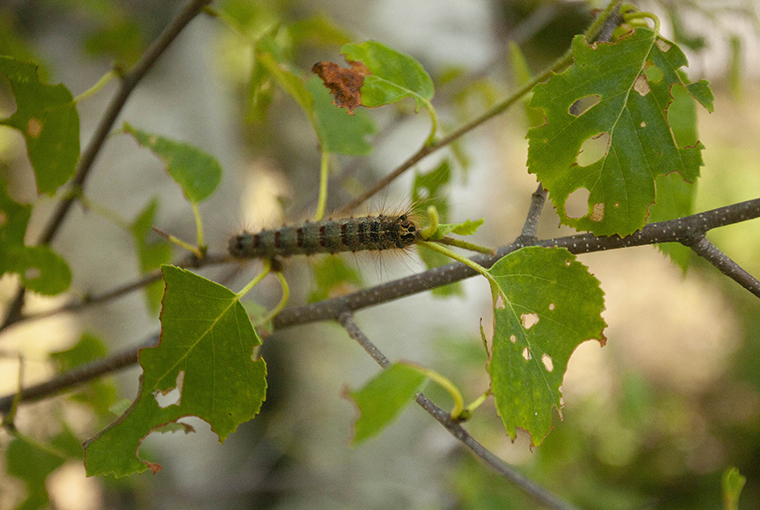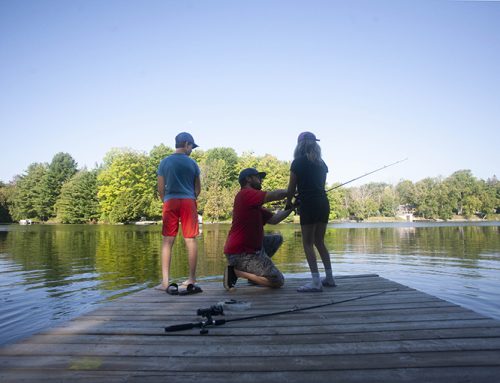
Invasive caterpillars have ravaged trees across the province, but experts with the Ontario Federation of Anglers and Hunters (OFAH) Invading Species Awareness Program (ISAP) say healthy trees will survive by growing a second wave of leaves.
LDD (lymantria dispar dispar), formerly known as gypsy moths, have been in the boom of a seven to 10-year cycle across southern Ontario reaching as far north as Sault Ste. Marie, ISAP Education Liason Riley-Ann Schmidt said.
In caterpillar form, LDD chew holes in leaves and can even strip an entire tree canopy.
“This stress on our trees can lead to mortality, but if your tree is healthy, it should be able to survive a LDD attack as most trees will be able to go through a second growth of leaves mid-season, after the LDD caterpillars have begun to pupate before becoming moths,” she said, pointing out that in moth form, LDD no longer defoliate trees.
Boom and bust
The boom-and-bust cycle that will see LDD populations return to much more manageable levels has been seen with other invasive species, such as purple loosestrife, and even native defoliators, like eastern tent caterpillar, Schmidt added.
Impacts to anglers and hunters are largely indirect, in most circumstances. Most hunters won’t encounter LDD when they are at their worst, barring those who took part in the spring bear hunt until the end of June.
Anglers shouldn’t be directly impacted by LDD, unless they are in an infested region where they enjoy fishing from shore, Schmidt said.
How to help
Everyone has a role to play in managing LDD during these boom years, Schmidt said. That usually means physically removing and placing caterpillars, moths, and egg masses in a bucket of soapy water.
To make this easier, ISAP recommends wrapping burlap around the base of your most valued trees and unrolling it on especially warm days.
“This will make capturing the caterpillars much easier since they migrate up and down the trees throughout the day but will seek shelter within the burlap on warm days,” Schmidt said.
For more resources on how to deal with LDD on your property, click here. For more information on what the province is doing, click here.






Leave A Comment